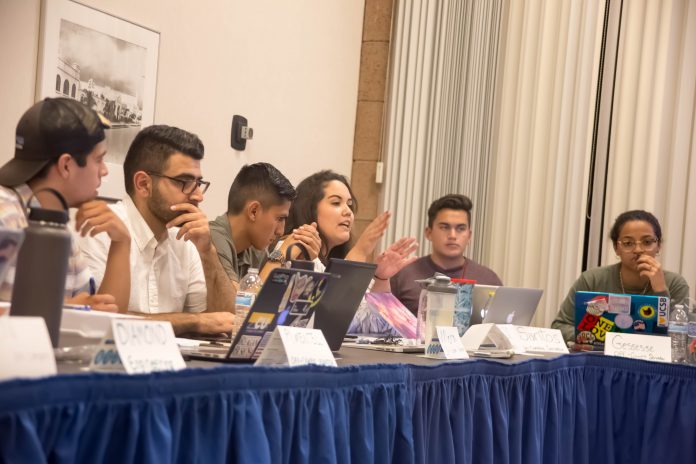
Lauren Marnel Shores
Campus Beat Reporter
At its first meeting for the 2017-18 school year, the 68th Associated Students Senate unanimously passed a resolution recommitting to the “Master Plan,” a proposed avenue for eliminating tuition in California’s public higher education system.
California’s Master Plan for Higher Education was a commitment in 1960 ”to a high quality, free, and universally accessible higher education for all Californians.”
The Senate resolution, authored by senators Dhishal Jayasinghe and Andrea Reyes, describes the Senate’s plans to emphasize the “$48 Fix,” an annual state income tax of $48 to fully eliminate tuition in public colleges and universities. This would include California Community Colleges, California State Universities, and the University of California.
“It was a very simple plan,” explained student sponsor Woodrow Davidson, a second year history of public policy major. “Everybody chips in, no one has to pay tuition, whatsoever. No one has to worry about going to the financial aid office. No one has to worry about going to the BARC office. No one has to worry about having to withdraw from school because they can’t afford to pay.”
During the early 2000s, the state of California experienced a fiscal crisis, resulting in a two-year period during which the state withheld enrollment funding from the UC system. What followed was a period of partial privatization of tuition, in which the students were charged to offset the 39 percent decrease in funding.
“Ever since the year 2000, tuition has increased 150 percent in the UC system, 170 percent in the CSU system, and 200 percent in the CCC system,” explained Reyes. With the recent UC Regents vote to increase tuition 2.5 percent, those numbers are only growing. This is already reflected on UCSB’s Office of Financial Aid and Scholarship website, which shows that in-state tuition has grown to $12,630 for the 2017-2018 school year.
“We really take it for granted that our K-12 education is provided to us at no cost to us as kids. That just seems to make intuitive sense,” said student sponsor Spencer Brandt, a third year history of public policy major.
“But for some reason, when you turn 18, you’re out on your own,” Brandt said. “If you’re going to go to a UC, you are going to be asked to shell out thousands of dollars, in addition to committing yourself to student loan debt that can range anywhere from $20,000 to higher over the course of your next 10 to 20 years.”
Rising tuition costs are especially a detriment to the UC students who are food insecure, with four out of every 10 students falling under this category, and the many others who are also housing insecure. “In order to get an education in California, you shouldn’t have to basically take a vow of poverty, and food insecurity, and housing insecurity to get that education,” said Justin Deckard, a third year sociology major and campus organizing director for the UC Santa Barbara External Vice President of Statewide Affairs.
The new resolution details the Senate’s plans to tackle the tuition obstacle by writing letters and soliciting support from local representatives such as Assemblymember Monique Limon and State Senator Hannah-Beth Jackson, the chancellors of the University of California, the UC regents, and the student body presidents of every higher education public school.
In addition, it promises to “take active measures” through an educational campaign that would explain how the $48 Fix can be implemented to “reclaim public higher education.”










